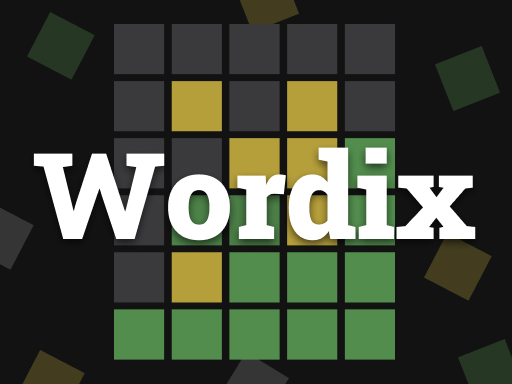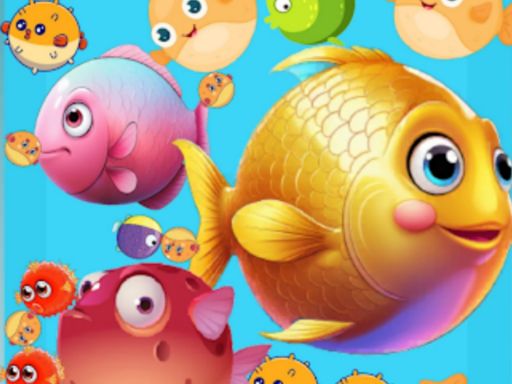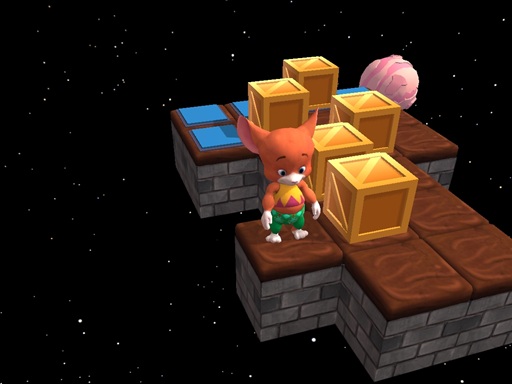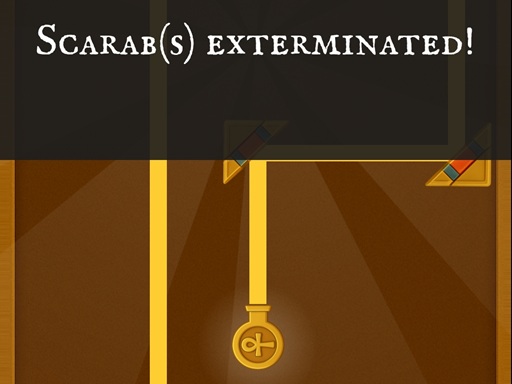Spot The Hidden Differences
About Spot The Hidden Differences
You know that feeling, right? That moment when you stumble upon a game, completely by accident, and it just… *clicks*? It’s not always the AAA blockbuster with photorealistic graphics or the indie darling that’s been hyped for months. Sometimes, it’s something quietly brilliant, something that sneaks up on you and suddenly, you’re hours deep, completely lost in its world, wondering where the time went. That’s exactly what happened to me with this game, Spot The Hidden Differences. I mean, honestly, when I first heard the name, I probably scoffed a little. Spot the difference? Like, from a kids' magazine? But oh, my friend, let me tell you, I was so incredibly wrong. This isn't just a game; it's a *discovery*. It’s a whole new way to unwind, to sharpen your mind, and to find a profound sense of satisfaction that I honestly haven’t felt from a puzzle game in ages.
I’ve always been drawn to games that demand a certain kind of focus, whether it’s the intense concentration needed to land a perfect headshot in an FPS or the meticulous planning required for a grand strategy game. But sometimes, you just want to engage your brain without the adrenaline spike, you know? You want something that feels like a warm, comforting hug for your grey matter, but still offers a genuine challenge. That’s where this game, which I’ve affectionately started calling ‘Diffsy’ in my head because it just fits, absolutely shines.
The premise, on the surface, is deceptively simple: you’re presented with two images, side-by-side, that look almost identical. Your mission, should you choose to accept it (and trust me, you absolutely should), is to find the ten subtle differences between them. Ten. Sounds easy, right? That’s what I thought too. I remember my first level, a vibrant scene of a bustling market square in some charming European town. My eyes scanned the image, darting from left to right, comparing the fruit stalls, the architecture, the little details of the people milling about. I found the first couple pretty quickly – a missing flag on a building, a different color on a vendor’s scarf. "Ha!" I thought, "This is a breeze." And then… the breeze died. The next few became progressively harder, forcing me to slow down, to really *look*.
What's fascinating is how your brain adapts. At first, you’re just broadly scanning, hoping something will jump out. But as you progress, you start developing this almost surgical precision. You learn to break the image down into quadrants, to compare small sections, pixel by pixel, almost. You’ll find yourself focusing on textures, on shadows, on the most minute changes in an object’s position or even its very existence. There’s something truly magical about that shift in perception. It’s like unlocking a new level of observation in your own mind.
The brilliant thing about this game is how it caters to different moods. You know how sometimes you want to just chill out, put on some lo-fi beats, and just exist in a game? Diffsy lets you do that. You can just take your sweet time, zoom in on every single detail until you can practically count the threads in a tapestry, and meticulously compare every single leaf on a tree. There’s no pressure, no clock ticking down, just you and the puzzle. And honestly, those are some of my favorite moments. I’ll often play it late at night, when the house is quiet, and just lose myself in the intricate details of a fantastical forest scene or a serene Japanese garden. It’s incredibly relaxing, almost meditative. My shoulders drop, my brow unfurrows, and I just… *focus*. It’s a wonderful way to decompress after a long day, a genuine mental cleanse.
But then, there are those other times, right? When you’ve had your coffee, you’re feeling sharp, and you want to put your skills to the test. That’s when you switch to the timed mode. Oh, man, that’s where the adrenaline kicks in, not in a heart-pounding, fight-or-flight way, but in a focused, competitive surge. Suddenly, every second counts. Your eyes are flying across the screen, your finger hovering over the mouse, ready to click the instant a difference reveals itself. The satisfaction of nailing all ten differences with seconds to spare? Chef’s kiss. It’s that same rush you get from perfectly executing a combo in a fighting game or solving a complex riddle in an adventure title, but it’s all about pure, unadulterated observation. You can almost feel your brain cells firing faster, connecting dots, making those lightning-quick comparisons. It’s a fantastic way to train your brain, to really push your observational skills to their limit.
What's interesting is the sheer variety of the pictures. One level might have you scrutinizing a vibrant, slightly chaotic street fair, where the differences could be anything from a missing balloon to a change in a stall's awning. The next, you might be poring over a tranquil, minimalist landscape, where the differences are incredibly subtle – a cloud shape, a ripple in water, a tiny bird on a distant branch. This makes me wonder about the artists behind these levels; they're clearly masters of subtle deception. They know exactly how to hide things in plain sight, how to use color and composition to distract your eye. And the art styles themselves are so diverse, from painterly landscapes to crisp, almost photographic scenes, keeping every new level feeling fresh and exciting. You never know what visual treat, and what devilishly clever hiding spots, await you.
The real magic happens when you’re down to that last, elusive difference. You’ve found nine, you’ve scoured the image a dozen times, you’ve zoomed in so close you can see the individual brushstrokes, and yet… nothing. That’s the moment of delightful frustration. You lean closer to the screen, your eyes narrowing, your jaw perhaps clenching just a little. You might even murmur to yourself, "Where *are* you, you sneaky little thing?" And then, usually when you least expect it, or when you’re about to give up and use a hint (which, by the way, are sparingly given and feel like a true last resort), it just *snaps* into focus. A tiny, almost imperceptible change. A shadow that’s slightly longer, a pattern that’s subtly different, a flower petal that’s missing. That "aha!" moment? It’s pure, unadulterated joy. It’s the click of a perfectly solved puzzle, the satisfying thud of a perfectly landed jump, the quiet triumph of understanding.
In my experience, the best moments in gaming come when a game manages to transcend its mechanics and connect with you on a deeper level. Diffsy does that. It’s not just about finding differences; it’s about training your mind to see more, to appreciate detail, to slow down and truly observe the world around you, even if it's a digital one. It's a testament to clever game design that something so fundamentally simple can be so endlessly engaging and rewarding. It makes you feel smarter, more perceptive, and utterly content.
Just wait until you encounter some of the truly devious ones. There are times when the difference isn't an *addition* or a *subtraction*, but a *change* – a color shift so slight it almost blends, a texture swap that tricks your peripheral vision. Those are the ones that really make you feel like a detective, meticulously piecing together clues. And the feeling of accomplishment when you clear a particularly challenging level? It’s fantastic. It’s not the roaring applause of a stadium, but the quiet, internal cheer of a brain well-exercised.
So, yeah, if you're looking for a game that will genuinely surprise you, that will offer both profound relaxation and stimulating challenge, and that will make you lose track of time in the best possible way, you absolutely have to check out Spot The Hidden Differences. Don’t let the simple name fool you. This isn’t just a casual pastime; it’s a beautifully crafted experience that will sharpen your mind, soothe your soul, and probably make you look at the world a little differently. It's truly a gem, and I'm genuinely excited for you to discover the magic for yourself. Trust me on this one. You won't regret it.
I’ve always been drawn to games that demand a certain kind of focus, whether it’s the intense concentration needed to land a perfect headshot in an FPS or the meticulous planning required for a grand strategy game. But sometimes, you just want to engage your brain without the adrenaline spike, you know? You want something that feels like a warm, comforting hug for your grey matter, but still offers a genuine challenge. That’s where this game, which I’ve affectionately started calling ‘Diffsy’ in my head because it just fits, absolutely shines.
The premise, on the surface, is deceptively simple: you’re presented with two images, side-by-side, that look almost identical. Your mission, should you choose to accept it (and trust me, you absolutely should), is to find the ten subtle differences between them. Ten. Sounds easy, right? That’s what I thought too. I remember my first level, a vibrant scene of a bustling market square in some charming European town. My eyes scanned the image, darting from left to right, comparing the fruit stalls, the architecture, the little details of the people milling about. I found the first couple pretty quickly – a missing flag on a building, a different color on a vendor’s scarf. "Ha!" I thought, "This is a breeze." And then… the breeze died. The next few became progressively harder, forcing me to slow down, to really *look*.
What's fascinating is how your brain adapts. At first, you’re just broadly scanning, hoping something will jump out. But as you progress, you start developing this almost surgical precision. You learn to break the image down into quadrants, to compare small sections, pixel by pixel, almost. You’ll find yourself focusing on textures, on shadows, on the most minute changes in an object’s position or even its very existence. There’s something truly magical about that shift in perception. It’s like unlocking a new level of observation in your own mind.
The brilliant thing about this game is how it caters to different moods. You know how sometimes you want to just chill out, put on some lo-fi beats, and just exist in a game? Diffsy lets you do that. You can just take your sweet time, zoom in on every single detail until you can practically count the threads in a tapestry, and meticulously compare every single leaf on a tree. There’s no pressure, no clock ticking down, just you and the puzzle. And honestly, those are some of my favorite moments. I’ll often play it late at night, when the house is quiet, and just lose myself in the intricate details of a fantastical forest scene or a serene Japanese garden. It’s incredibly relaxing, almost meditative. My shoulders drop, my brow unfurrows, and I just… *focus*. It’s a wonderful way to decompress after a long day, a genuine mental cleanse.
But then, there are those other times, right? When you’ve had your coffee, you’re feeling sharp, and you want to put your skills to the test. That’s when you switch to the timed mode. Oh, man, that’s where the adrenaline kicks in, not in a heart-pounding, fight-or-flight way, but in a focused, competitive surge. Suddenly, every second counts. Your eyes are flying across the screen, your finger hovering over the mouse, ready to click the instant a difference reveals itself. The satisfaction of nailing all ten differences with seconds to spare? Chef’s kiss. It’s that same rush you get from perfectly executing a combo in a fighting game or solving a complex riddle in an adventure title, but it’s all about pure, unadulterated observation. You can almost feel your brain cells firing faster, connecting dots, making those lightning-quick comparisons. It’s a fantastic way to train your brain, to really push your observational skills to their limit.
What's interesting is the sheer variety of the pictures. One level might have you scrutinizing a vibrant, slightly chaotic street fair, where the differences could be anything from a missing balloon to a change in a stall's awning. The next, you might be poring over a tranquil, minimalist landscape, where the differences are incredibly subtle – a cloud shape, a ripple in water, a tiny bird on a distant branch. This makes me wonder about the artists behind these levels; they're clearly masters of subtle deception. They know exactly how to hide things in plain sight, how to use color and composition to distract your eye. And the art styles themselves are so diverse, from painterly landscapes to crisp, almost photographic scenes, keeping every new level feeling fresh and exciting. You never know what visual treat, and what devilishly clever hiding spots, await you.
The real magic happens when you’re down to that last, elusive difference. You’ve found nine, you’ve scoured the image a dozen times, you’ve zoomed in so close you can see the individual brushstrokes, and yet… nothing. That’s the moment of delightful frustration. You lean closer to the screen, your eyes narrowing, your jaw perhaps clenching just a little. You might even murmur to yourself, "Where *are* you, you sneaky little thing?" And then, usually when you least expect it, or when you’re about to give up and use a hint (which, by the way, are sparingly given and feel like a true last resort), it just *snaps* into focus. A tiny, almost imperceptible change. A shadow that’s slightly longer, a pattern that’s subtly different, a flower petal that’s missing. That "aha!" moment? It’s pure, unadulterated joy. It’s the click of a perfectly solved puzzle, the satisfying thud of a perfectly landed jump, the quiet triumph of understanding.
In my experience, the best moments in gaming come when a game manages to transcend its mechanics and connect with you on a deeper level. Diffsy does that. It’s not just about finding differences; it’s about training your mind to see more, to appreciate detail, to slow down and truly observe the world around you, even if it's a digital one. It's a testament to clever game design that something so fundamentally simple can be so endlessly engaging and rewarding. It makes you feel smarter, more perceptive, and utterly content.
Just wait until you encounter some of the truly devious ones. There are times when the difference isn't an *addition* or a *subtraction*, but a *change* – a color shift so slight it almost blends, a texture swap that tricks your peripheral vision. Those are the ones that really make you feel like a detective, meticulously piecing together clues. And the feeling of accomplishment when you clear a particularly challenging level? It’s fantastic. It’s not the roaring applause of a stadium, but the quiet, internal cheer of a brain well-exercised.
So, yeah, if you're looking for a game that will genuinely surprise you, that will offer both profound relaxation and stimulating challenge, and that will make you lose track of time in the best possible way, you absolutely have to check out Spot The Hidden Differences. Don’t let the simple name fool you. This isn’t just a casual pastime; it’s a beautifully crafted experience that will sharpen your mind, soothe your soul, and probably make you look at the world a little differently. It's truly a gem, and I'm genuinely excited for you to discover the magic for yourself. Trust me on this one. You won't regret it.
Enjoy playing Spot The Hidden Differences online for free on Petlg Games. This Puzzle game offers amazing gameplay and stunning graphics. No downloads required, play directly in your browser!
How to Play
Mouse click or tap to play





Comments
This game is awesome! I love the graphics and gameplay.
One of the best games I've played recently. Highly recommended!